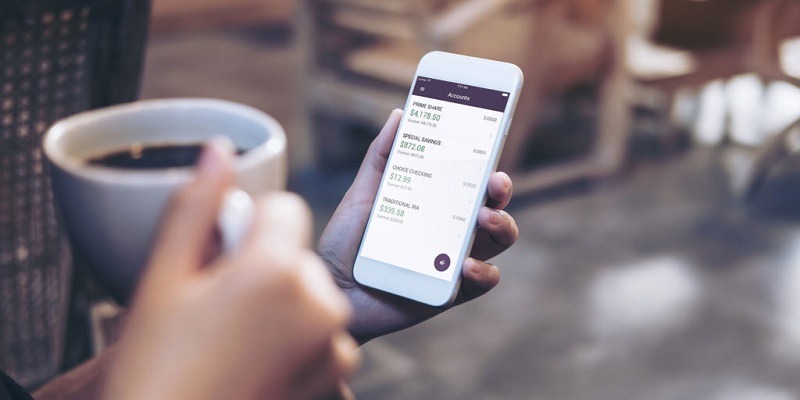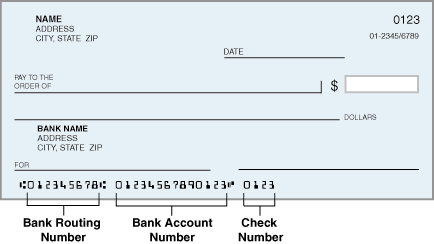 Banks and credit unions frequently send and receive money from other institutions and to do so, they must have a routing number.
Banks and credit unions frequently send and receive money from other institutions and to do so, they must have a routing number.
A check routing number tells you where the bank account was opened and it is a basically a form of identification as it tells which bank is sending or receiving the money.
But How Does Check Routing Numbers Work? If you’ve ever been curious of the purpose of these numbers, then written below may give you some insight on check routing numbers and some useful information to know, especially if you often use checks.
What is a Routing Number?
What exactly is a routing number? If you ever look at the bottom left corner of your checks, if you still happen have checks, it is the first 9-digit set of numbers.
A routing number is assigned to a bank or credit union so they can send and receive funds from other institutions. The number identifies the bank of where the account was opened. A Routing Number is also known as an ABA, American Bankers Association, Number.
There are many banks or credit unions out there and some of them may have similar names. This is where these numbers come into play.
Rather than confusing you and bank staff members, routing numbers help bankers and machines process checks to their designated locations. Routing numbers are also used for a lot of common tasks such as direct deposit, automatic bill payments, check processing, and wire transfers.
Where to Find a Routing Number?

You can easily find your bank’s routing number if you often use checks. A routing number is part of the MICR, magnetic ink character recognition, line at the bottom of your checks. Banks may also post their routing numbers online.
Since these numbers aren’t as important as your bank account number, there is no reason to keep your bank routing number a secret. Routing numbers may vary based on location, but if you and your friend bank at the same financial institution, then your routing numbers are the same. Routing number just identifies the bank, not the individual account.
Having a routing number readily available is also beneficial for those that do not have access to their checks. You also want to make sure you have the right routing number for whatever transaction you are making. The routing number on your checks may be different from the number you would use for money transfers, or something of the like.
- For Huntington bank customers, be sure to read our Huntington Bank Routing Number Information review to learn the 4 quick-and-simple ways to find your bank routing number.
- For Chase Bank customer, you can view our Chase Routing Number Information review to learn more about the routing numbers for each state.
Where Did They Come From?
Check routing numbers originated in 1910 by the ABA as a way to simplify check processing while also making them more secure. The numbers are just a unique way to identify the paying bank and determines where the account is located.
It also helps the person taking the check be sure that they would actually get the money from the promised payer’s bank. The Federal Reserve later took on the large role of payment processing after it was founded and added a Federal Reserve number to each financial institution’s routing number. As mentioned earlier, your check routing number contains 9 digits.
The first four numbers is the “Federal Reserve Routing Symbol” which specifies the type of institution and the district the account was opened in, the following four digits identifies the financial institution where you opened your account, and remaining number is the check digit.
Routing Numbers in Check Processing
Routing numbers are later used in electronic check-cashing networks which drastically increased check processing speeds.
Processing is almost instantaneous with electronic check copies compared to paper copies mainly due to the passage of the Check 21 Act. Since check processing is at greater speeds, “check float” doesn’t work in this situation.
A “check float” is basically writing a check for an amount you do not have in hopes that a deposit will post before it is processed.
Routing numbers would be at fault in this case. Just understand that payments move at lightening speeds, so don’t write checks for an amount that you do not have.
 |
 |
 |
Bottom Line
Routing numbers are essentially the bank’s or credit union’s ID when sending and receiving money from other institutions. Hopefully, you will have an idea of How Does Check Routing Numbers Work and the basics of their role in check processing.
If you are interested in many other bank topics and news, then check out our How To Write A Check, Cashier’s Check 101, Ways to Get the Most Out of Your Bank, and tips on Earning Bank Bonuses!
If you would like to earn an extra cash incentive and take advantage of bonuses in your area, then don’t hesitate to check out our expansive list of the Best Bank Bonuses!



I love reading this article. I fully understand now all about routing number and what it was really working and its important.